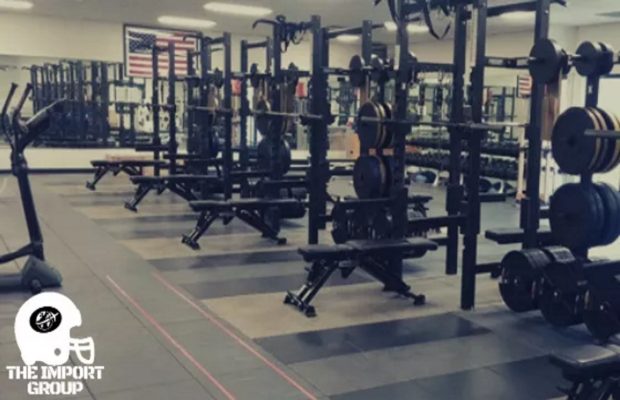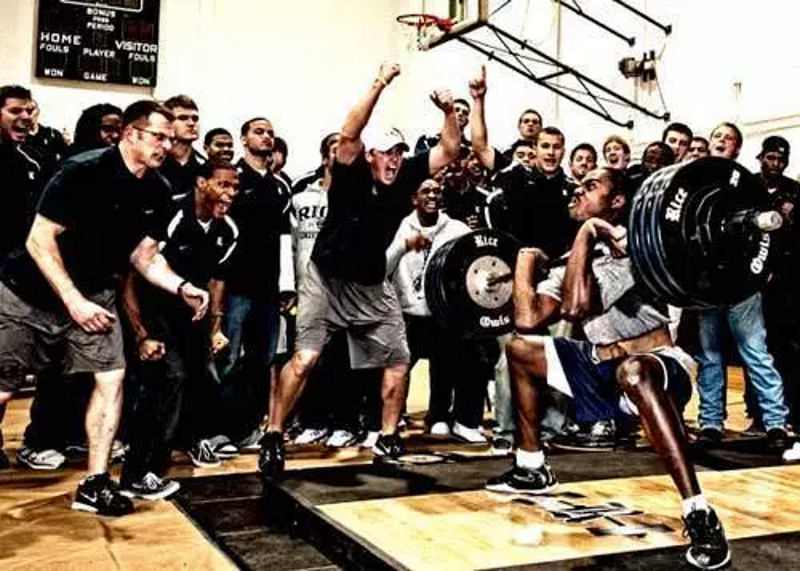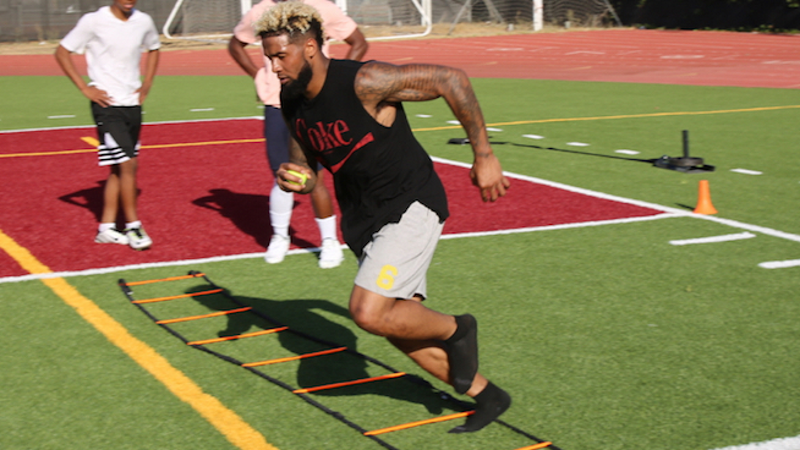Strength & conditioning for international American Football teams

By Justin Sottilare
Most teams in the international American football community do not provide exercise programs for their athletes, which is a major factor in player development. Every professional, college, and most high school teams in America, have a strength and conditioning program in place to get their players training the correct way. This is something the international community should take note of and put in place. There are a few teams out there doing this already, but it’s not the “norm.”
In this article we’ll discuss some of the variables you’ll need to know about, to help you design your own training program. Without a proper program, you end up getting a large percentage of athletes training the wrong way, which leads to sub-optimal performance. There are multiple theories to how Football players should train, but most agree on a few key concepts: explosive movements (whether that’s Olympic lifts or movements that provide the same type of benefits), ground-based movements (performing movements with feet planted in the ground), unilateral training (single arm or single leg exercises), core, speed, agility, and plyometrics training (reactive). Also, it’s worth noting that training your neck is very important in this sport.
WORKOUT SCHEDULE
An individual workout should include each of the following in this order:
- Warm-up – Dynamic warm-up.
- Mobility/Flexibility – Focus on joints here. For flexibility, focus on imbalances.
- Plyometric & Agility – Incorporate a variety of exercises here, use single and double leg exercises in different directions. Depth-jumps and speed ladders are a good option.
- Speed & Acceleration – Improving running mechanics is a big focus here.
- Explosive & Multi-joint Movements – Most of your movements should be included in this category. This is where you’ll try to implement as many ground-based movements as possible, while sprinkling in unilateral exercises (single arm and/or leg).
- Single-joint Movements – This should only be used for weak areas or when athletes want to increase muscle size. An example of this is a biceps curl or triceps extension. This is where you’d include neck exercises.
- Conditioning – High intensity. No slow cardio.
- Cool Down – Foam rolling and static stretching (:20-:30s) every main muscle used that day.
TRACK YOUR DATA!

Photo: FORM
Before we go any further, if you aren’t keeping a solid record of your performance from the start of your program until the end, you’ll never know if you’ve made progress. To get the best results, you need to do the following:
- Set your goals (i.e. Increase lean mass and Improve athletic performance)
- Test areas related to your goals (1-2x per season) (i.e 1RM for bench, squat)
- If you have the ability to test other athletic measures, go for it.
- Create a plan to achieve your goals (strength and conditioning program)
- Can/should also include nutrition
- Start the plan and track your data
- Re-test and evaluate (1-2x per season)
- Adjust your plan
PROGRAM FACTORS
Other factors to include when designing your training program are the training split (3-5 days a week), what equipment you have, the sets and reps (this varies depending on the specific goal of that training phase), rest times (very important and under-utilized), and the variety of movements.
Training Split
If you use a 3-day per week split, you’ll focus on your entire body for each training day. The argument for this strategy is that as football players, we use our entire bodies for every play, so we should train our entire body together. If we split it up into upper and lower body, the training is less specific to the sport.
If you use a 4-day per week split, you can do 4 total body days (Mon, Tue, Thur, Fri) with an emphasis on either upper or lower body for each day. For example, Mon and Thur will be total body days but have a focus on lower body. The 4-day per week split allows for more volume and can be useful in guys looking to add size.
If you’re using a 5-day split, use the 4-day outline and include some mobility work & recovery on Wednesday.
Sets & Reps
This gets a bit more complicated and requires a much longer explanation than can be provided in this article. Here are some basic tips though: if you want to focus on increasing size, use higher reps and sets (3-4 sets of 8-12), if you want to focus on all out power, keep the reps lower (2-5) with 3-6 sets. Any single joint exercisesshould be higher in reps (10-12) and as they will be done at the end of the workout, you can reduce the number of sets (2-3). If this is something you’re interested in learning more about, there are plenty of articles you can find online specifically on this topic.
Main Exercises
You should have a main focus or movement for every workout. Usually, those main lifts will be the squat, bench press, deadlift, push press and cleans. After you’ve performed your main movement for the day, you can vary the secondary or assisting exercises.
Rest Periods
The amount of rest required after any exercise depends on the type of exercise and the goal of that workout. The goal is to move towards shorter rest periods. We want to be just as powerful in the 4th quarter as we are in the 1st. This is impossible, but it’s the goal, and if we treat it as such, we’ll have an advantage over our opponent. Any explosive movement you do that uses heavy weights will require you to fully recover. This could be anywhere from 90 seconds to 3 minutes. If you’re focusing on building muscle size, rest for 0-60s. If you’re super-setting two exercises, have no rest between them and then 60-90s after they are done. There are plenty of different rest intervals, but we’re focusing on high intensity movements that need to be performed fast. A general rule of thumb is, if you’re not as fast with a movement on your next set, then you should rest a bit longer. Just like everything else, keep track of this data (as well as your heart rate) so you can see progress over time.
Variety of Movements
You’ll want to create a pool of exercises that you can choose from. You don’t want to have the same exercises over and over as that gets boring and will lead to a plateau. A good strategy is to take a main movement and come up with a few variants for that. Let’s look at the squat for example. You can perform the squat as your main lift and then use a front squat, overhead squat, goblet squat, split squat, etc. This way, you’re slightly altering the way the muscles are worked and the load. Varying exercises should be done strategically to ensure no muscle imbalances occur.
ASK FOR HELP

I partnered up with an elite sports performance specialist, Ty Henry, and we founded Fitness Forum Academy with the goal of providing International Football players a competitive advantage through fitness and nutrition programs. We use a phone application to deliver exercise & nutrition programs and track all your data, so you can see exactly what progress you’ve made.
Disclaimer: This article is property of The Import Group, written with the intent to inform the international football community about various topics important to everyone involved.
Media outlets are allowed, and strongly encouraged to post this article on their websites, blogs, and social media channels, provided this disclaimer is included. Thank you for respecting the author rights of The Import Group.

